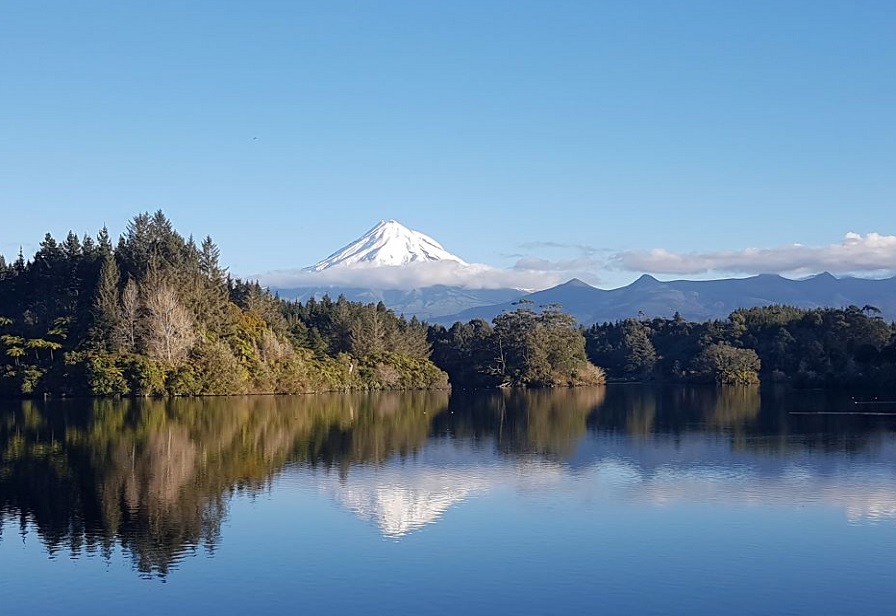Do you want to have a say on the swimmability of rivers in Taranaki? Or which waterways are important for fishing or boating? Or what we should be doing to support healthy ecosystems in our region’s lakes and streams?

Taranaki Regional Council is asking people to have a kōrero on the future of freshwater in the region and identify the values that are important when caring for our waterways.
Let’s Kōrero: Essential Freshwater gives the public the chance to take part in surveys and have their say, with the feedback shaping new rules on everything from how we preserve threatened species to how much water can be used for farming or industrial use.
Launched alongside the kōrero with the community are new ‘storymaps’ on six proposed Freshwater Management Units or FMUs for Taranaki that tell the story of what’s happening with our waterways.
Director-Environment Quality Abby Matthews says the feedback from the community is vital as the Council puts together its Natural Resource Plan for freshwater to protect this precious resource now and for future generations
“The future of freshwater is in the hands of the people who live in our fantastic region so it’s really important that they share their views. We want to know what people’s long-term vision is for our waterways and all the things that are important to them.
“That could be identifying those special places where they like to cool off on a hot summer’s day, to what we could all be doing to protect the natural beauty of our rivers, streams and lakes. For others, it may mean being able to practice mahinga kai or other cultural activities.
“We’ve hopefully made it easy for people to engage with the kōrero webpages providing all the info you’ll need and the surveys are short and user-friendly. There’s an interactive map available as well where people can pick a value they want to comment on, place it on the location they’re interested in and share their views.”
Ms Matthews says the Council is also seeking views on each of the six FMUs and if the approach to creating these areas is the right one.
Feedback on the values, the FMUs and the long-term vision for freshwater in Taranaki can be made from 26 October to 9 December. Click here(external link) to have your say or click here(external link) to find out more about the FMUs.
The Council is creating the Natural Resources Plan in response to the government’s far-reaching freshwater regulations aimed at restoring and protecting the health of waterways in New Zealand. A kōrero will also be held on outcomes, limits and targets before notification of the Plan in 2024.
What are Freshwater Management Units (FMUs)?
- The six proposed FMUs for Taranaki are the Northern Hill Country, the Pātea Catchment, the Waitara Catchment, the Coastal Terraces, the Southern Hill Country and the Volcanic Ring Plain.
- Every waterbody in the region needs to be contained within an FMU.
- Within each FMU Council will set time-specific freshwater goals aligned with community and iwi aspirations to build better environmental outcomes and plan and prepare for the future.
- We have drafted our initial FMUs based on a few core concepts:
- Keeping it simple - fewer FMUs will ensure we aren’t over-complicating things
- Ki uta ki tai – from the mountains to the sea to ensure that catchments are not divided
- Grouping catchments of similar types (for example, Volcanic Ring Plain catchments vs Hill Country catchments vs Coastal Terraces catchments etc).
- Using catchment boundaries instead of rivers as boundaries.
Natural Resources Plan: what is it?
- The Natural Resources Plan for Taranaki will replace the Regional Freshwater Plan and other statutory documents such as the Regional Policy Statement, Regional Air Plan and Regional Soil Plan.
- Feedback from the public will guide targets, limits and rules in the Plan.
- The Plan will help Council to promote the sustainable use, development and protection of our natural and physical resources.
- The Plan will be publicly notified in mid-2024 prior to formal submissions and a hearing process.
Engagement timeline
April 2021-December 2021: Freshwater vision, values and Freshwater Management Units
Early 2023: Freshwater outcomes and change drivers
Mid 2023: Limits and targets
Mid 2024: Natural Resources Plan notified